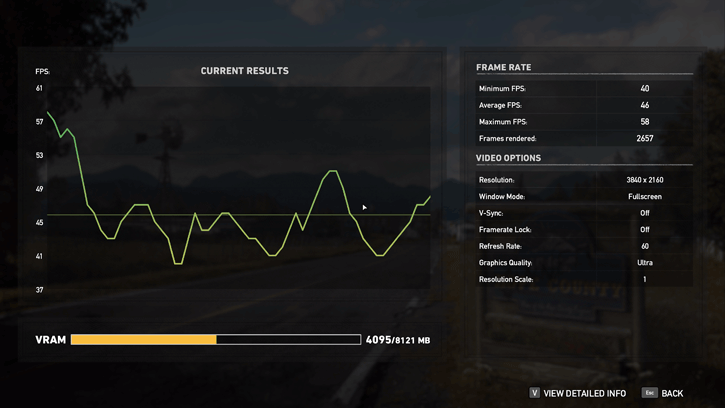Image quality settings and benchmark system
Image quality settings and benchmark system
Before we begin with the graphics performance tests a little explanation. Far Cry 5 uses an enhanced version of the Dunia 2 engine. Though the game uses DirectX 11 API, the development team have optimized the game extensively to take advantage of hardware capabilities. Furthermore, Far Cry 5 is a testament to achieving proper visual fidelity while keeping overall polygon count in check. Nature lovers will be pleased to find very dense foliage and clutter, all possible through clever usage of the engine’s impostor system.
The PC version of the game has a built-in easy to use benchmark, the good thing is that it is really close to actual gameplay performance. For FC 5 its assets, and the UI support 4k native, as well as ultra-wide resolutions, including 21:9 and the super ultra-wide 32:9 aspect ratio, like the Samsung CHG90 monitor. Far Cry 5 boasts a new terrain and water system that’s running very efficiently on PC and consoles alike. The water system especially has some bleeding edge features, including advanced material blending, multiple water height levels and physics effects.
We test with Ultra quality settings enabled. The game will allow settings like aspect ration, FOV, FPS locking and resolution scaling can all be fooled around with, “The game will auto-detect the user’s hardware and will set the matching quality preset and resolution.”
The graphics cards tested
In this article, we'll make use of the following cards at a properly good PC experience graphics quality wise, the quality mode as shown above with Vsync disabled (which needs to be done by editing a configuration file). The graphics cards used in this test are:
- Geforce GTX 1050 (2GB)
- Geforce GTX 1050 Ti (4GB)
- GeForce GTX 1060 (6GB)
- GeForce GTX 1070
- GeForce GTX 1070 Ti
- GeForce GTX 1080
- GeForce GTX 1080 Ti
- GeForce GTX 780 Ti
- GeForce GTX 970
- GeForce GTX 980
- GeForce GTX 980 Ti
- GeForce Titan X (Pascal)
- GeForce Titan Xp
- Radeon R9 285 (2GB)
- Radeon R9 390 (8GB)
- Radeon R9 390X (8GB)
- Radeon R9 Fury
- Radeon R9 Fury X
- Radeon R9 Nano
- Radeon RX 460 (4GB)
- Radeon RX 470 (8GB)
- Radeon RX 480 (8GB)
- Radeon RX 570 (4GB)
- Radeon RX 580 (8GB)
- Radeon RX Vega 56
- Radeon RX Vega 64
System specifications & drivers
Our test system is based on the eight-core Intel Core i7-5960X Extreme Edition with Haswell-E based setup on the X99 chipset platform. This setup is running tweaked at 4.20 GHz. Next, to that, we have energy saving functions disabled for this motherboard and processor (to ensure consistent benchmark results). We use Windows 10 all patched up. Each card runs on the same PC with the same operating system clone.
The drivers are:
- GeForce cards have been updated with the latest 391.35 drivers (download).
- Radeon graphics cards we used the latest AMD Radeon Crimson 18.3.4 Driver (download).



